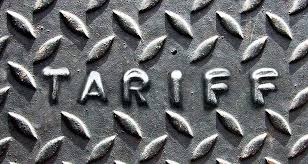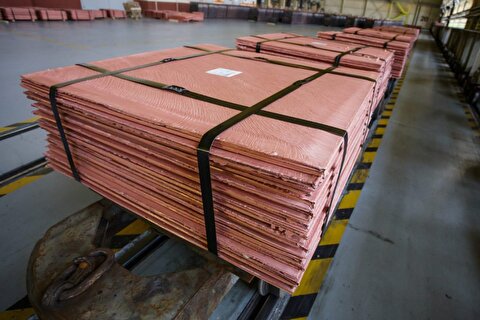
European Union likely to Impose Definitive Tariffs on Steel Imports: Reports

Although in July 2018, EU had imposed provisional safeguards measures on the import of 23 steel products for 200 days i.e. till 4 Feb’19, the vote on 16 Jan’19 would put in place an effective cap on steel imports for three years i.e. till 2021.
The decision to restrict steel imports into EU has come following the U.S. government’s imposition of tariffs on steel and aluminum imports entering United States announced in March last year. This barrier by U.S. on steel imports has raised concern amongst EU steel producers that European markets could be flooded by steel products that are no longer being imported into the U.S.
In Jul’18 EU’s provisional safeguard measure on 23 steel products import implies quota set at the average level of imports over the past three years, with a 25% tariff applied if the quotas are filled. This temporary measure won widespread support from the majority of EU countries.
Now, according to the market sources, Commission’s proposal is similar to the provisional measures, although quotas would be set at the average of the last three years plus 5%. It has also set limits for major exporting countries. The quotas would apply for three-month periods in order to limit stockpiling and could be increased by 5% each year.
In total, 26 types of steel will be covered by the EU’s definitive measures, according to the commission. That compares with 23 product categories under the provisional system and 28 within the scope of the probe. The 28 products covered by the inquiry together account for around 40% of the EU’s annual iron and steel imports.
EU sees a surge in steel imports
The main exporters of steel to the EU are China, India, Russia, South Korea, Turkey, and Ukraine. However, in the first nine months of 2018 (Jan-Sep), imports from Turkey and Russia have increased the most- from Turkey by 57% and from Russia by 56% y-o-y basis.
In fact, in the third quarter (Jul-Sep) of 2018, Eurofer said that EU’s steel consumption had risen by just 0.6% but imports increased by 10%, meaning EU mills were at best only able to deliver the same amount of steel as last year. Imports make up some 25% of the EU market.
The end user segment in EU is completely against the tariffs imposition on steel imports. European auto manufacturers association ACEA called the measures protectionist and said they would harm its members. It added that steel exports to the United States had only dropped slightly and so little extra steel was being diverted to Europe.


Gold price eases after Trump downplays clash with Fed chair Powell

Copper price hits new record as tariff deadline looms

Brazil producers look to halt pig iron output as US tariff threat crimps demand

Chile’s 2025 vote puts mining sector’s future on the line

Gold price could hit $4,000 by year-end, says Fidelity

Three workers rescued after 60 hours trapped in Canada mine

US targets mine waste to boost local critical minerals supply

Glencore workers brace for layoffs on looming Mount Isa shutdown

Energy Fuels surges to 3-year high as it begins heavy rare earth production

Trump tariff surprise triggers implosion of massive copper trade

Maxus expands land holdings at Quarry antimony project in British Columbia

BHP, Vale accused of ‘cheating’ UK law firm out of $1.7 billion in fees

Southern Copper eyes $10.2B Mexico investment pending talks

American Tungsten gets site remediation plan approved for Ima mine in Idaho

Kinross divests entire 12% stake in Yukon-focused White Gold

Gold price could hit $4,000 by year-end, says Fidelity

Southern Copper expects turmoil from US-China trade war to hit copper

Ramaco Resources secures five year permit for Brook rare earth mine in Wyoming

Column: EU’s pledge for $250 billion of US energy imports is delusional

Trump tariff surprise triggers implosion of massive copper trade

Maxus expands land holdings at Quarry antimony project in British Columbia

BHP, Vale accused of ‘cheating’ UK law firm out of $1.7 billion in fees

Southern Copper eyes $10.2B Mexico investment pending talks

American Tungsten gets site remediation plan approved for Ima mine in Idaho

Kinross divests entire 12% stake in Yukon-focused White Gold

Gold price could hit $4,000 by year-end, says Fidelity

Southern Copper expects turmoil from US-China trade war to hit copper

Ramaco Resources secures five year permit for Brook rare earth mine in Wyoming














